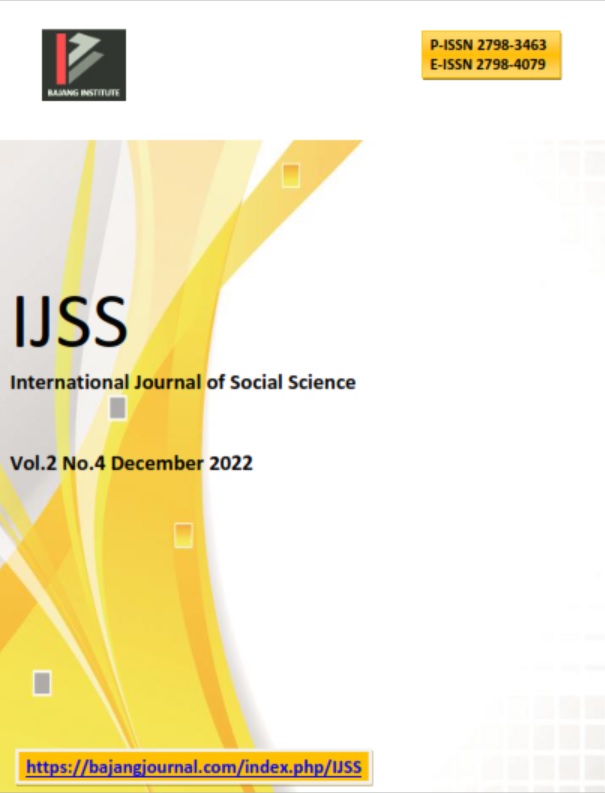A STUDY OF GREEN INDEPENDENT VILLAGES IN ECONOMIC ASPECTS IN THE SPECIAL REGION OF YOGYAKARTA
DOI:
https://doi.org/10.53625/ijss.v2i4.4144Keywords:
Independent Green Village, Economic AccessAbstract
Independent green village is a village that can develop and enhance their institutional capacity by persevering their tradition, local wisdom, and knowledge. This village is expected to be able to develop their economical products that are based on natural resources and is managed sustainably so that it can be a way to maximize the village’s prosperity.
This study uses qualitative exploratory research with Strength, Weakness, Opportunity, and Threat (SWOT) as its analytical tool. The data are gathered with four techniques, that is observation, interview, documentation study, and Focus Group Discussion (FGD). Informants are determined interactively and continuously so that it produces saturated data.
The result of this exploratory study found that people and the natural environment in the economic sector are united and are interrelated. Hence, the economic access of the independent green village can improve the natural resources quality through community empowerment, skill development, knowledge on entrepreneurship improvement, and expanding business relationship through driving figures like innovator that has concern regarding people to improve and diversify local resources-based products.
References
P. B. United Nations Environment Programme. International Resource Panel, United Nations Environment Programme. Sustainable Consumption, Decoupling natural resource use and environmental impacts from economic growth. UNEP/Earthprint, 2011.
F. Rangkuti, Analisis SWOT teknik membedah kasus bisnis. Gramedia Pustaka Utama, 1998.
J. W. Creswell, “Reflections on the MMIRA The Future of Mixed Methods Task Force Report,” J. Mix. Methods Res., vol. 10, no. 3, pp. 215–219, 2016, doi: 10.1177/1558689816650298.
Sugiyono, Metode Penelitian Pendidikan Pendekatan Kuantitatif, kualitatif, dan R&D. Bandung: Bandung: Alfabeta, 2010.
M. B. Milles and A. M. Huberman, “Analisis data kualitatif: buku sumber tentang metode-metode baru,” Jakarta UIP, 1992.
F. Teguh, “Tata kelola destinasi membangun ekosistem pariwisata.” Gadjah Mada University Press, Yogyakarta, 2015.
E. Wollenberg, G. Limberg, R. Iwan, R. Rahmawati, and M. Moeliono, Hutan kita, keputusan kita: sebuah survei mengenai prinsip-prinsip untuk pengambilan keputusan di Malinau. Center for International Forestry Research (CIFOR), 2006.
M. Silahuddin, “Kewenangan Desa dan Regulasi Desa,” Jakarta Kementeri. Desa, Pembang. Drh. Tertinggal dan Transm. Republik Indones., 2015.
P. Hardi and T. Zdan, “Assessing sustainable development: Principles in practice. International institute for sustainable development,” Winnipeg, Manitoba, Canada, 1997.
M. Hasan and M. Azis, “Pembangunan Ekonomi & Pemberdayaan Masyarakat: Strategi Pembangunan Manusia dalam Perspektif Ekonomi Lokal.” CV. Nur Lina Bekerjasama dengan Pustaka Taman Ilmu, 2018.
E. Neumayer, “Global warming: discounting is not the issue, but substitutability is,” Energy Policy, vol. 27, no. 1, pp. 33–43, 1999.
G. M. Meier and J. E. Stiglitz, Frontiers of development economics: the future in perspective. World Bank Publications, 2001.
C. S. Mellor, “Dermatoglyphic evidence of fluctuating asymmetry in schizophrenia,” Br. J. Psychiatry, vol. 160, no. 4, pp. 467–472, 1992.
M. Cock and B. Hopwood, Global Warning: Socialism and the Environment. Militant Publications, 1996.
M. Mies and V. Shiva, La praxis del ecofeminismo: biotecnología, consumo y reporoducción, vol. 128. Icaria Editorial, 1998.
B. Giddings, B. Hopwood, and G. O’brien, “Environment, economy and society: fitting them together into sustainable development,” Sustain. Dev., vol. 10, no. 4, pp. 187–196, 2002.
S. Lorek and J. H. Spangenberg, “Sustainable consumption within a sustainable economy–beyond green growth and green economies,” J. Clean. Prod., vol. 63, pp. 33–44, 2014.
Downloads
Published
How to Cite
Issue
Section
License
Copyright (c) 2022 Sugiyanto, Nelly Tiurmida, Tomi Agus Triono

This work is licensed under a Creative Commons Attribution 4.0 International License.

















